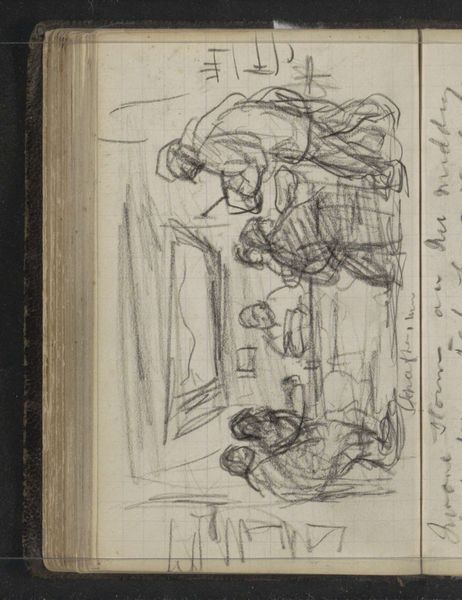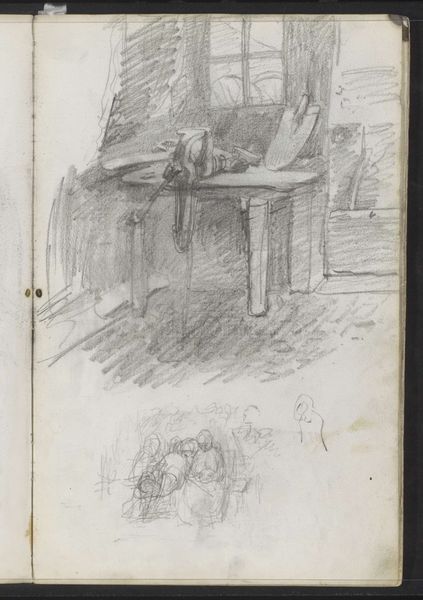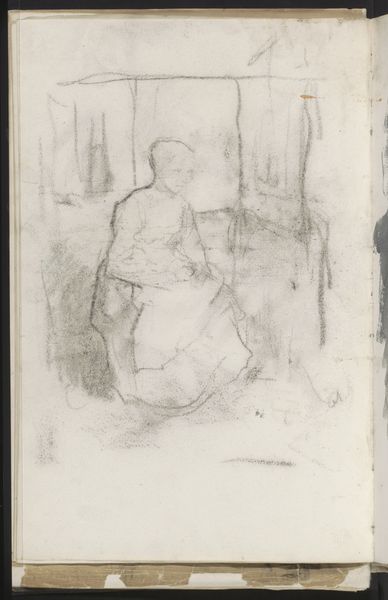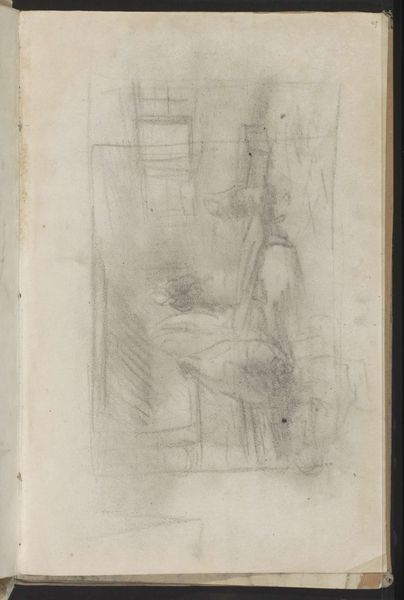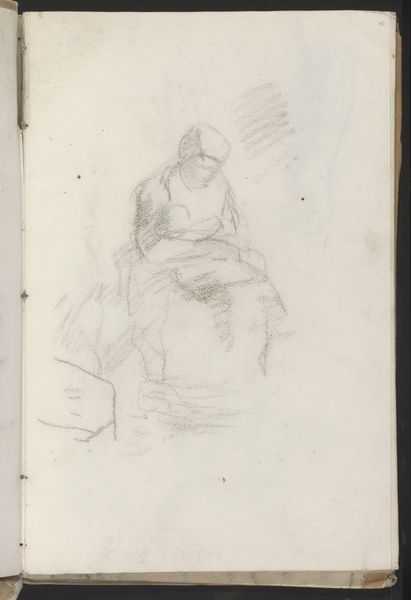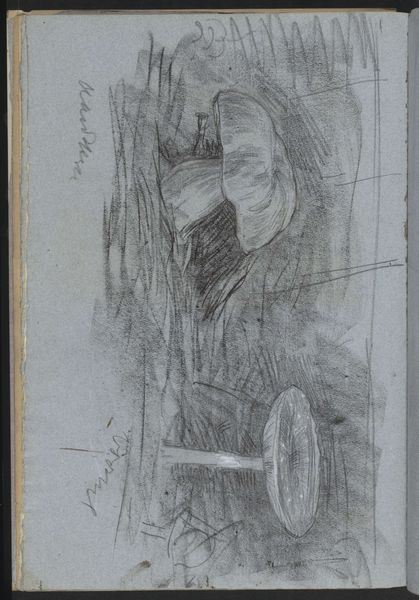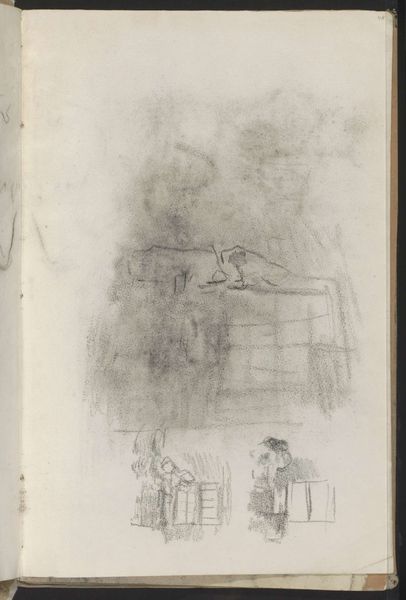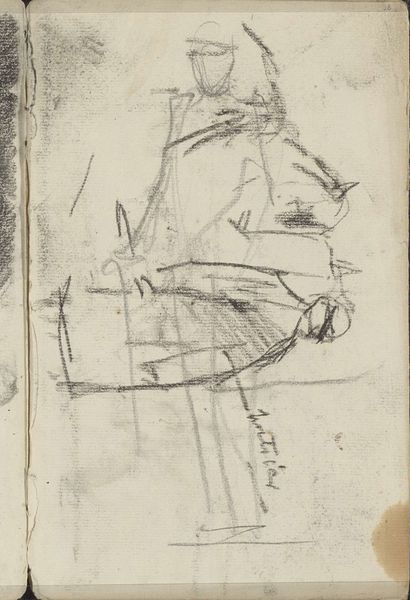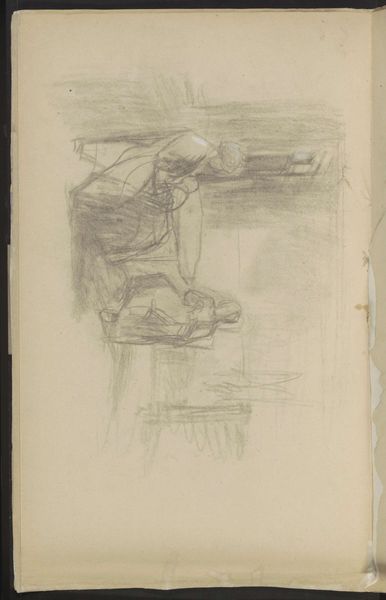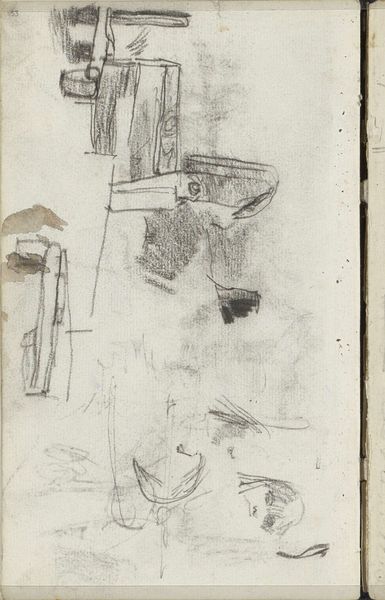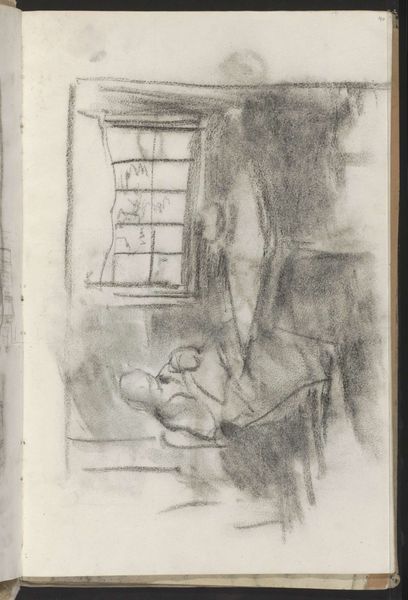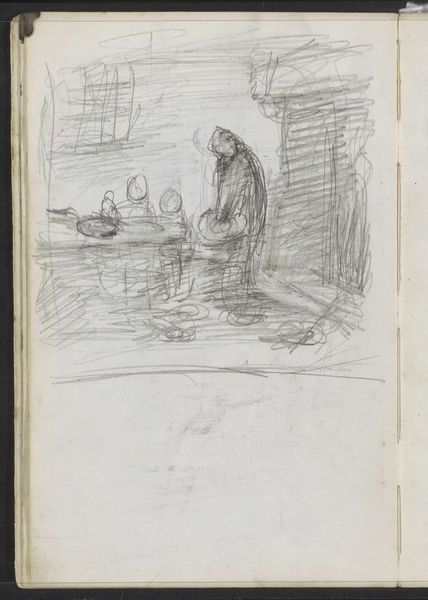
drawing, pencil
#
portrait
#
drawing
#
pencil
#
genre-painting
#
northern-renaissance
#
realism
Copyright: Rijks Museum: Open Domain
Editor: This drawing by Jozef Israëls, "Interior with a Seated Woman by a Window," from around 1855-1859, is currently held at the Rijksmuseum. It's primarily a pencil drawing. It feels very raw, almost like we're peeking into a private moment, or a preparatory sketch. What aspects of the drawing grab your attention? Curator: My eye is drawn to the very *process* of its creation, how the materiality of the pencil dictates the forms we see. The visible sketch lines show the artist’s labor, the very *work* needed to create an image. Israëls doesn't try to hide the construction; instead, the marks are laid bare. Considering that, how might the “unfinished” quality impact how we understand its meaning? Editor: That's a good question. Perhaps its meaning lies in revealing the process itself. Also, this choice might indicate the economic conditions surrounding artistic production at the time. Curator: Precisely. How does the act of drawing with readily available and inexpensive materials reflect a shift in the social function of art itself, moving away from commissioned pieces to something more immediate and accessible? Editor: That’s fascinating. I hadn't considered the socioeconomic factors that could influence medium choice. It pushes me to think about art less as solely aesthetic and more as a result of material conditions. Curator: It is vital that we do so. Perhaps the "realism" tag of this drawing does not necessarily concern its themes, but relates to the stark depiction of pencil strokes in relation to a woman seated by the window, hinting towards the physical space where Israëls drew and how the drawing then takes the conditions of the material world that constitutes it. Editor: I will always wonder now what went through his mind as his hands brought this sketch to life! Curator: And how that mental landscape intertwines with available tools and socioeconomic climate.
Comments
No comments
Be the first to comment and join the conversation on the ultimate creative platform.
